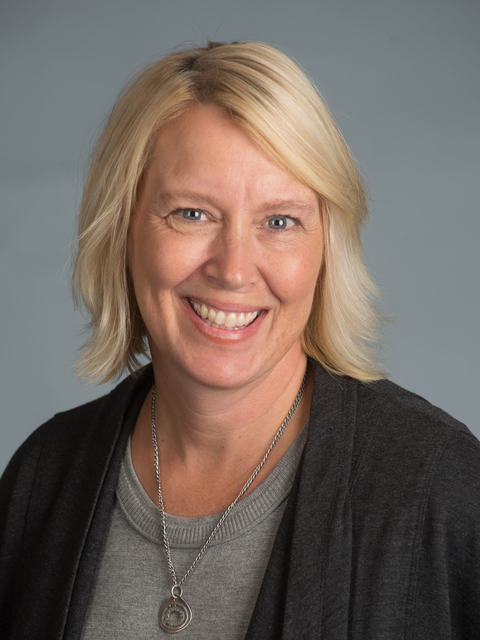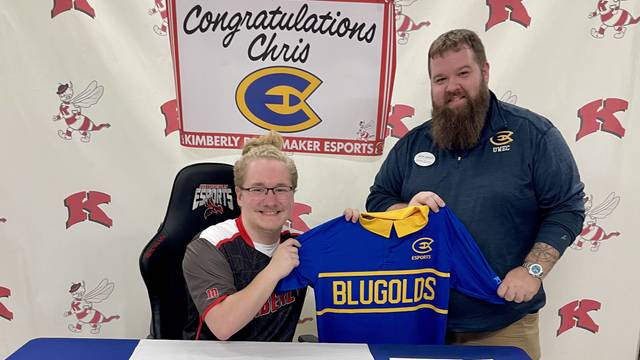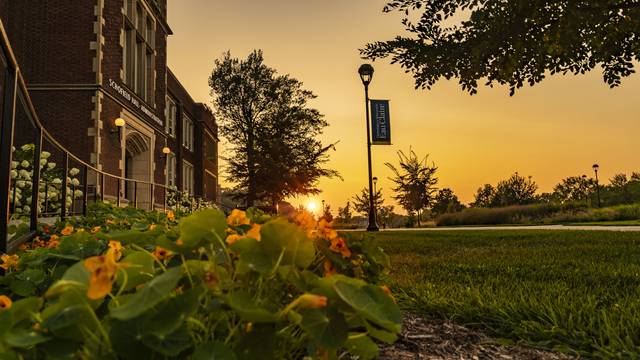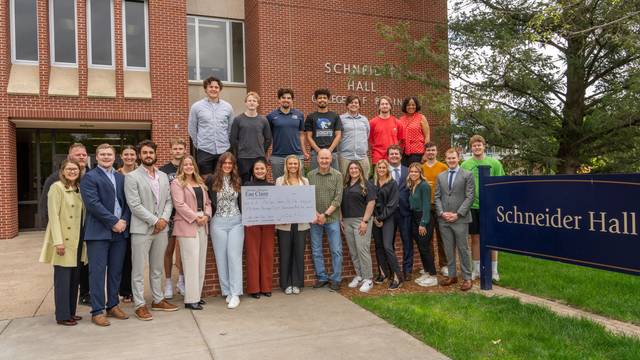Photo caption: UW-Eau Claire faculty member Dr. Kong Pheng Pha is helping create a traveling exhibit that will launch in January 2025 to commemorate the 50th anniversary of Hmong resettlement to Wisconsin. The exhibit, “Cia Siab (Hope) in Wisconsin: A HMoob (Hmong) Story,” will be displayed in Eau Claire as well as in several other Wisconsin communities with large Hmong populations.
A community-based traveling exhibit will launch in January 2025 to commemorate the 50th anniversary of Hmong resettlement to Wisconsin thanks to the work of a University of Wisconsin-Eau Claire professor and a team of scholars, experts and other specialists from throughout the state.
“Hmong people have been a part of Wisconsin for nearly five decades, and many younger Hmong now call Wisconsin their permanent home,” says Dr. Kong Pheng Pha, a UW-Eau Claire assistant professor of critical Hmong studies and women’s, gender and sexuality studies who is co-directing the project. “This exhibit honors the extraordinary experiences of all Hmong people while forcing us all to think about the larger humanities questions of survival, healing and what it means to be human in these times.”
The Hmong population in Wisconsin grew following the U.S. Secret War in Laos when Hmong were given refugee status after helping the United States fight communist forces as proxy soldiers.
Pha describes the 50th anniversary of Hmong resettlement to Wisconsin as “a historic moment that was born out of the Vietnam War,” and believes “we need to keep having these conversations about the legacies of war and its aftermath.”
The exhibit, “Cia Siab (Hope) in Wisconsin: A HMoob (Hmong) Story,” will encourage those important conversations among people regardless of whether they are familiar or unfamiliar with Hmong people or America’s secret war in Laos, Pha says.
“As a scholar of critical Hmong studies who is interested in social justice, it is important to me to keep telling our stories,” Pha says. “Hmong lives are extremely complicated, and I hope this exhibit will show that our communities are beautiful, but also constantly working on ourselves to heal from violence.”
“Cia Siab (Hope) in Wisconsin: A HMoob (Hmong) Story” will travel to Eau Claire and several other Wisconsin communities with large Hmong populations throughout the year in 2025 and then become part of the Wisconsin Historical Society’s collection.
“Having the exhibit permanently housed at the WHS means Hmong are finally seen as having a fundamental place in the fabric of Wisconsin,” Pha says. “Anyone can continue to visit the exhibit, which means these conversations can continue even after the traveling portion has concluded.”
Earlier this month, the National Endowment for the Humanities Public Humanities Project awarded Pha and Dr. Mai See Thao, assistant professor of anthropology and director of Hmong studies at UW Oshkosh, a $74,418 grant to support the traveling exhibit. Pha describes the grant as a “game changer” because the project team now can pay community collaborators and involve students at UW-Eau Claire and UW Oshkosh in their work collecting stories and artifacts for the exhibit.
Traveling exhibit
The planning team hopes the exhibit will inspire people to think about larger questions about war and its impact on people’s lives.
“We are centering on Hmong lives, especially elders, youth, LGBTQ and women’s lives, to bring attention to the ways war and exclusion have silenced these particular members of our communities,” Pha says. “We hope a public humanities project like this one can enable visitors to reflect on what it means to be human in the aftermath of violence, but also how humans can rebuild their lives out of political and social violence and division.”
The exhibit will focus on three themes:
- Hmong experiences of racism in the U.S. reveal the invisible wounds of the Secret War for Americans.
- Hmong contest the silences and absences in the Hmong and American story.
- Hmong remake home in Wisconsin by drawing on their cultural practices to shape the state’s cultural fabric.
The themes point to how social forces like war and colonial violence have displaced Hmong people, but also highlight Hmong people’s agency in making meaning out of these forces of violence, Pha says.
“The theme of racism as an effect of war is crucial because this may not be a link that visitors think about right away,” Pha says. “We strive to make this connection clear, to show how racism is an ongoing force that shapes Hmong people’s experiences in Wisconsin, but also how Hmong have resisted racism to grow our communities and foster the flourishing of our people.”
This exhibit is being designed to replicate the rooms of a typical Hmong home in Wisconsin.
“We want to draw visitors into the intimate worlds of Hmong people,” Pha says. “A house is one of the most sacred places for us, and it contains the hidden wounds that we carry. Also, the trauma experienced by war shows up in different activities, whether one is cooking familiar foods from the homeland or silently laying down on the bed at night.
“By being vulnerable, we want visitors to have a sense of how Hmong people have also constructed a ‘home’ here in America. The exhibit representing different rooms of a Hmong household will be a dynamic way for visitors to take in all the different sensorial elements of what it means to be Hmong in America in this moment in time.”
So far, the team has collected materials for the exhibit’s bedroom, including blankets, suitcases of clothes, journals, stools, nightstands and photo albums. They will continue to collect artifacts and stories for each of the rooms.
They also will capture oral histories from the people who donate the artifacts, giving them an opportunity to share what the artifacts mean to them.
People who want to donate and/or loan artifacts to the exhibit can find information here.
A collaborative effort
While Pha and Thao are co-directing the project, the core planning team also involves scholars, experts, specialists and community members from throughout Wisconsin.
With the NEH grant monies, they plan to hire students from UW-Eau Claire and UW Oshkosh to collect artifacts, conduct archival and oral history research, and help in exhibit design.
Pha is also meeting with stakeholders on and off campus to assemble a local team in Eau Claire that will help him find the best venue for the exhibit itself, as well as develop programming around the exhibit when it’s in the Chippewa Valley. In addition to programming for the community, Pha and Thao will also design curriculum alongside the exhibit for K-12 and postsecondary educators.
In the next year, the planning team also will hold two-day workshops in Eau Claire and in other anchor cities to receive community feedback on the themes, design and implementation of the exhibit as they prepare for 2025.
“We were very intentional on this project being a collaborative community-based project,” Pha says. “The WHS has been tremendously helpful with advising us on best practices with public humanities work, while working with community members has enabled us to draw on different kinds of expertise related to oral history research, exhibit and architectural design, public relations, photography, social media networking and much more. So, the collaborative nature makes this a stronger project.”
People interested in learning more about the project can find information on the Cia Siab team’s website or Facebook page.




